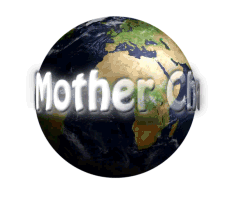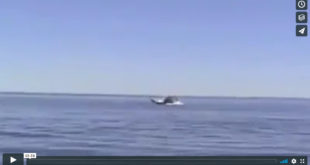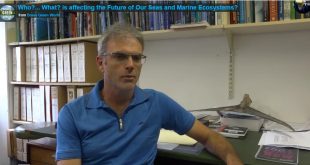NASA presenter, speaks on the observation results of the physical, biological and atmospheric impacts of the Pacific Ocean El Niño, taken via various measuring and recording methodologies, e.g. satellite imagery, ocean measuring instruments, among others, at US Center, Pacific Ocean El Niño impacts, COP 20, Lima.
NASA’s Earth Observing fleet in space has greatly contributed to our understanding of the El Niño phenomenon and its variability. The biological response to the El Niño as measured by NASA’s ocean monitoring instruments, e.g. SeaWifs which measure concentrations of phytoplankton in the oceans, e.g. Chlorophyll a., are affected during an El Niño thermocline depression which also results in depression of the nutrient grounds, which with temperature increases accounts for less nutrients in water column. Phytoplankton represents base level of the marine food web and any changes in them will have a ripple effect up through the food chain, however, right now we are only able to see phytoplankton from space, not fish.
The El Niño affects global weather patterns and atmosphere, i.e. rainfall anomalies and trends, typically, in a normal year over India and Australia there is a lot more precipitation, however, during EN that precipitation pattern shifts eastwards, resulting in reduced precipitation over same areas and onset of drought, incl. parts of South America. Studies have been done into types of El Niño’s, essentially warming in degrees celsius between Central and Eastern Pacific oceans over time, and decadel trends indicate that there is an increase and decrease respectively in intensity of El Niño’s in these two regions, should such change continue, what impact would that have upon oceanic/atmospheric responses and the economic impact on local, regional and global basin scales, is largely unclear, hence there is an absolute need for sustained measurements from satellites and in-situ instruments, etc. which would provide us with a total view of the El Niño.
The TPOS 2020 is a focused finite term project started in 2014 in the Pacific regions and currently a vulnerability has been identified in the percentage of data return, including the number of deployed buoys that have provided data has started to drop off, therefore it is really key that sustaining continuous measurement is maintained and the project is focusing on assessing various aspects of ‘how to’: sustain ocean condition measurements, add new perspectives and new measurements. Their goal: To transition from a loosely coordinated set of activities in the tropical Pacific to a systematic and sustainable TPOS by 2020.
NASA ‘s planning and implementation policies for ‘Future Earth-Observing Launches’ is an ongoing process into the next generation of sustained ocean measurement cycles with respect to El Niño phenomena and it’s global impacts.
Further links : http://www.tpos2020.org
http://earthobservatory.nasa.gov/Features/Phytoplankton/
http://www.wmo.int (Vol. II White Papers on El Niño)
Sustained ocean condition measurements are needed to understand the changes taking place.
 Mother Channel Environmental, climate change news and media.
Mother Channel Environmental, climate change news and media.



